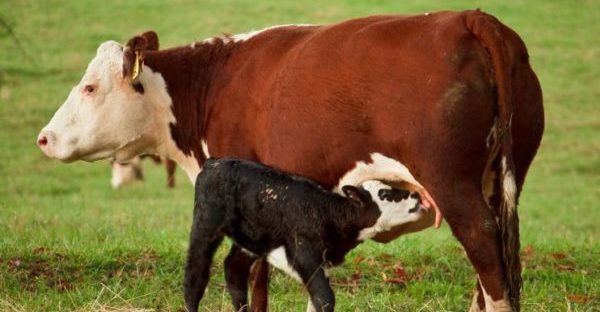Australian dairy cows are among the world’s best producers of milk rich in good fatty acids simply because they graze in paddocks, says the head of organics research at Southern Cross University.
Professor Carlo Leifert was co-author of an international study analysing 1,163 milk samples in the United States over three years. The research team found milk from grass-fed cows was higher in omega-3 and other good fatty acids than milk from cows fed a mostly grain diet.
“The result that milk from cows grazing outdoors has more beneficial omega-3 fatty acids than milk from cows raised indoors on grain – which is typically what happens in the US – is not surprising given cattle have evolved to eat grass or roughage, not grain,” said Professor Leifert, Director of the Centre for Organics Research.
“And 100% grass-fed organic dairy cows produce milk with an even higher nutritional value.
“Dairy production in Australia is still mainly pasture-based and producing certified organic grass-milk here is therefore relatively easy.
“Our research also indicates that the nutritional quality of milk (e.g. omega-3 levels) may be further enhanced by using legume-rich pastures and traditional dairy breeds. Again, this would be relatively easy to implement and may allow Australian organic dairy products to be marketed as having ‘added nutritional value’ or ‘naturally omega-3 enhanced’.”
The paper, ‘Enhancing the Fatty Acid Profile of Milk through Forage-Based Rations, with Nutrition Modeling of Dietary Outcomes’, was published in the Food Science and Nutrition journal.
The collaborative research project included the University of Minnesota (US), Johns Hopkins University (US), Newcastle University (England), Aarhus University Hospital (Denmark) and Southern Cross University.
It compared the fatty acid profile of milk from cows managed under three systems in the US:
1. ‘Grassmilk’: cows receive an essentially 100% organic grass and legume forage-based diet, via pasture and stored feeds like hay and silage.
2. Standard ‘Organic’ milk: cows receive, on average, about 80% of their daily Dry Matter Intake (DMI) from forage-based feeds and 20% from grain and concentrates.
3. ‘Conventional’ milk: cows are fed rations in which forage-based feeds account for an estimated 53% of daily DMI, with the other 47% coming from grains and concentrates. Conventional management accounts for over 90% of dairy cows on US farms.
The researchers found that cows fed a 100 per cent organic grass and legume-based diet produce milk with elevated levels of omega-3 and conjugated linoleic acid (CLA) (another valuable, heart-healthy fatty acid), providing a markedly healthier balance of fatty acids.
The improved fatty acid profile in grass-fed organic milk and dairy products brings the omega-6/omega-3 ratio to a near 1 to 1, compared to 5.7 to 1 in conventional whole milk.
Omega-6 and omega-3 fatty acids are essential human nutrients, yet consuming too much omega-6 and too little omega-3 can increase the risk of cardiovascular disease, obesity, and diabetes.
“The finding that organic ‘grassmilk’ can help to increase omega-3 intake as recommended by nutritionists and food standard agencies, and balance the high omega-6 intake associated with many vegetable fats, may be particularly beneficial with respect to cardiovascular health,” Professor Leifert said.
“However, until evidence from dietary intervention studies is available it is virtually impossible to quantify potential health effects of organic milk consumption.”
(Source: Southern Cross University, Food Science and Nutrition)











